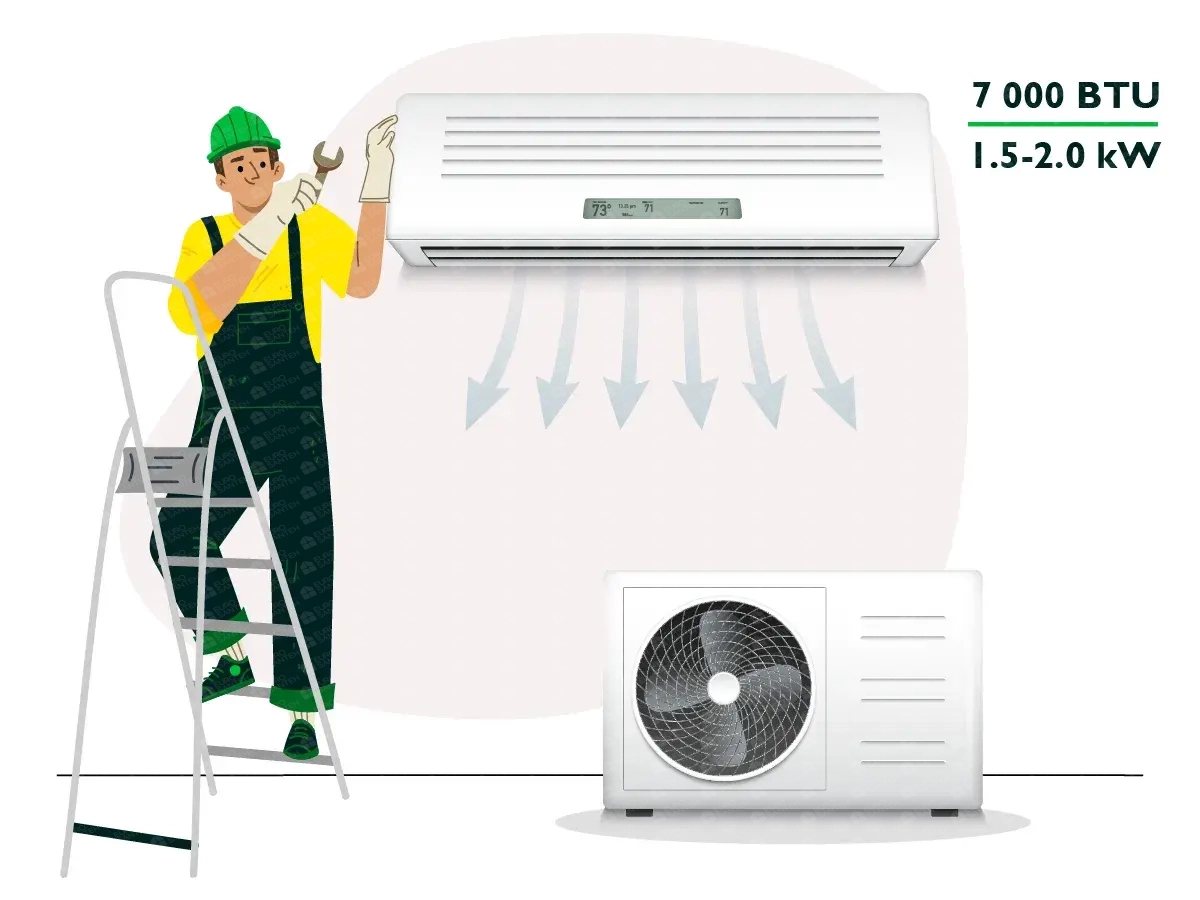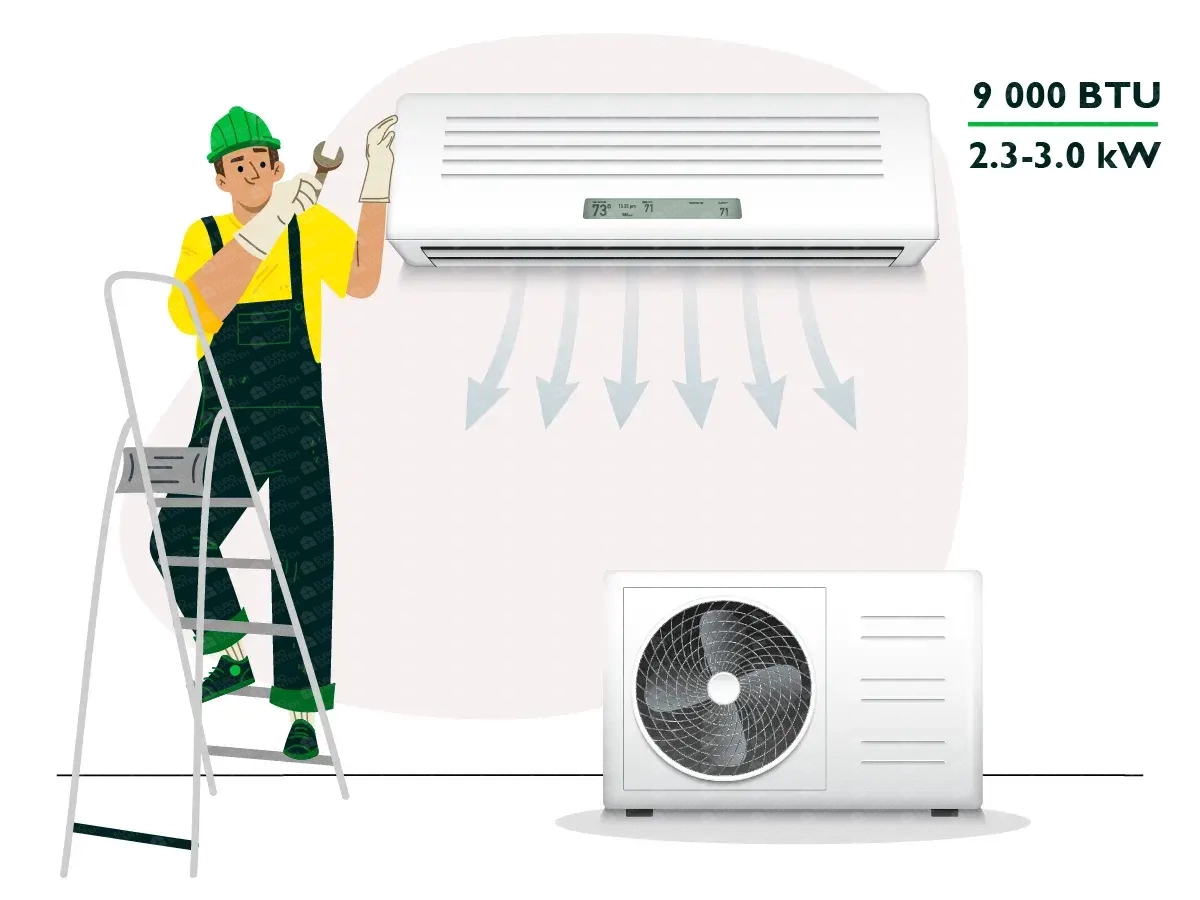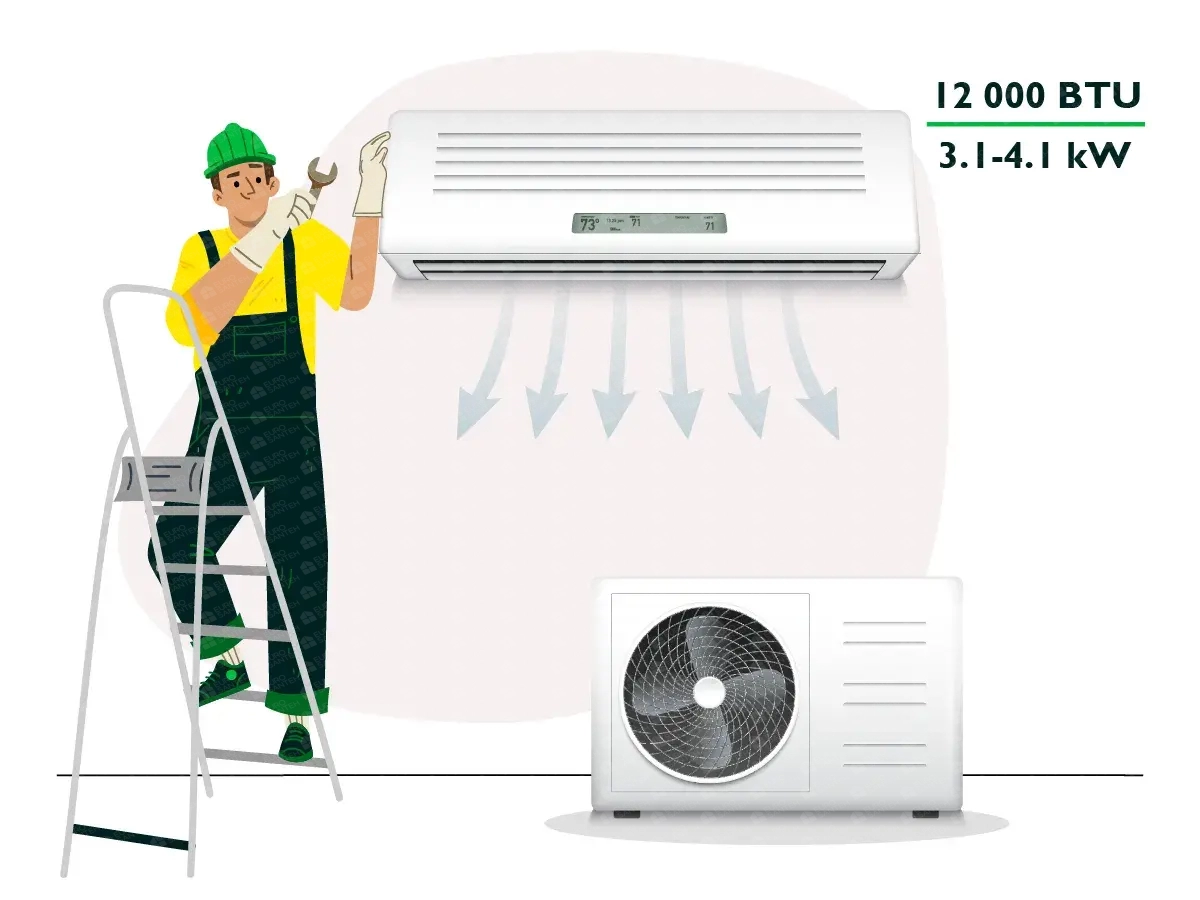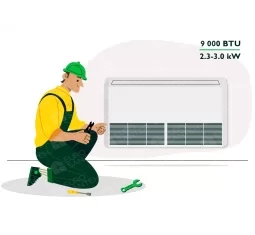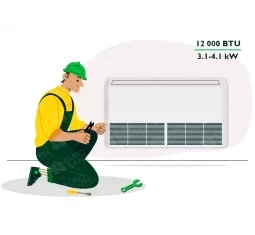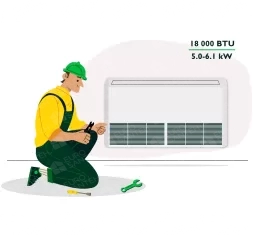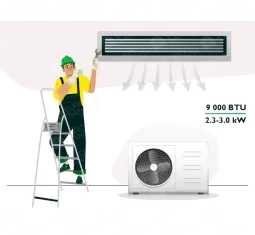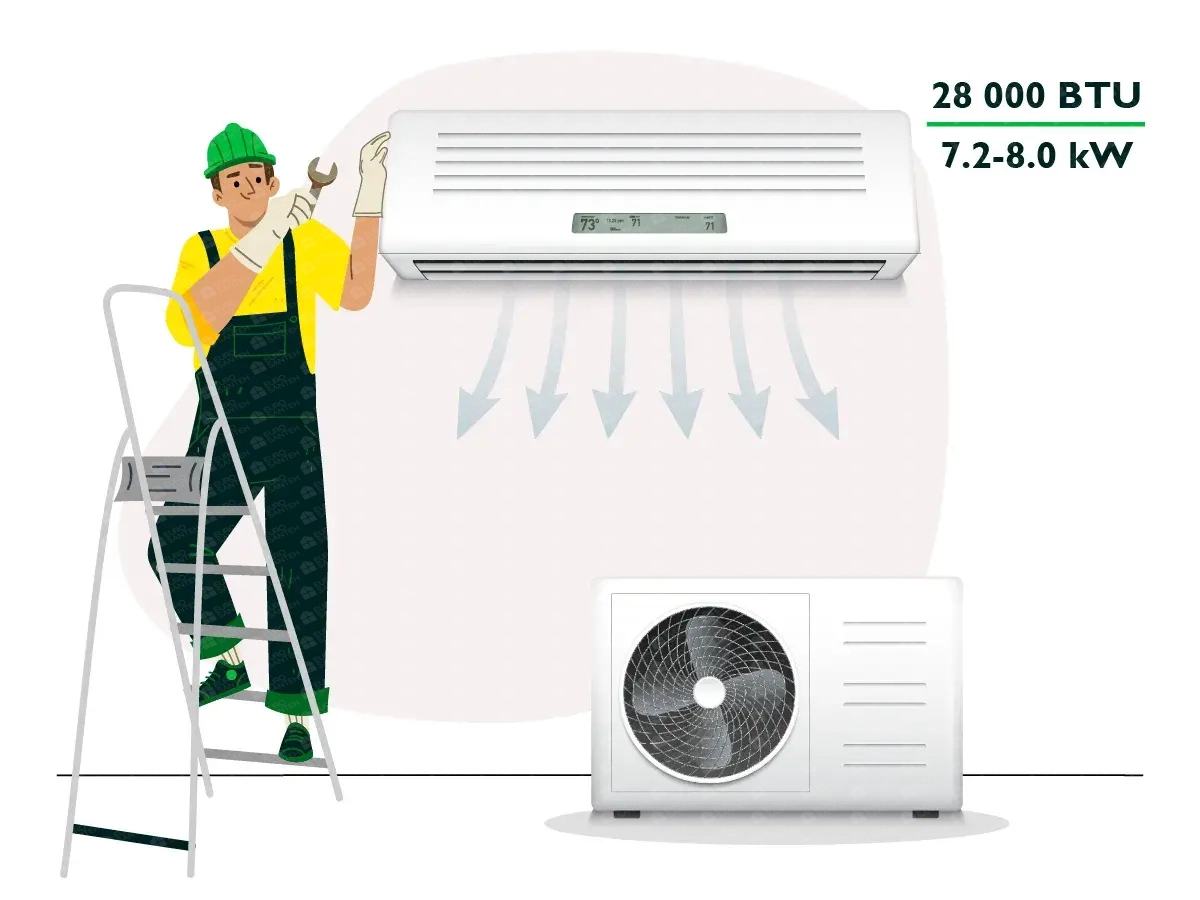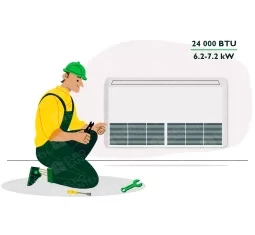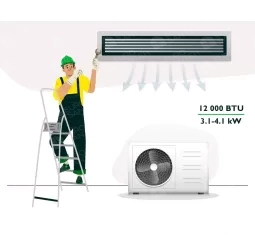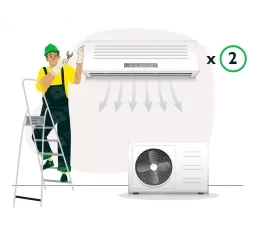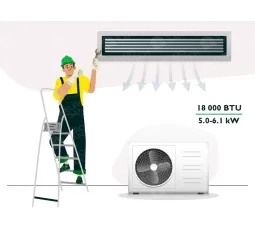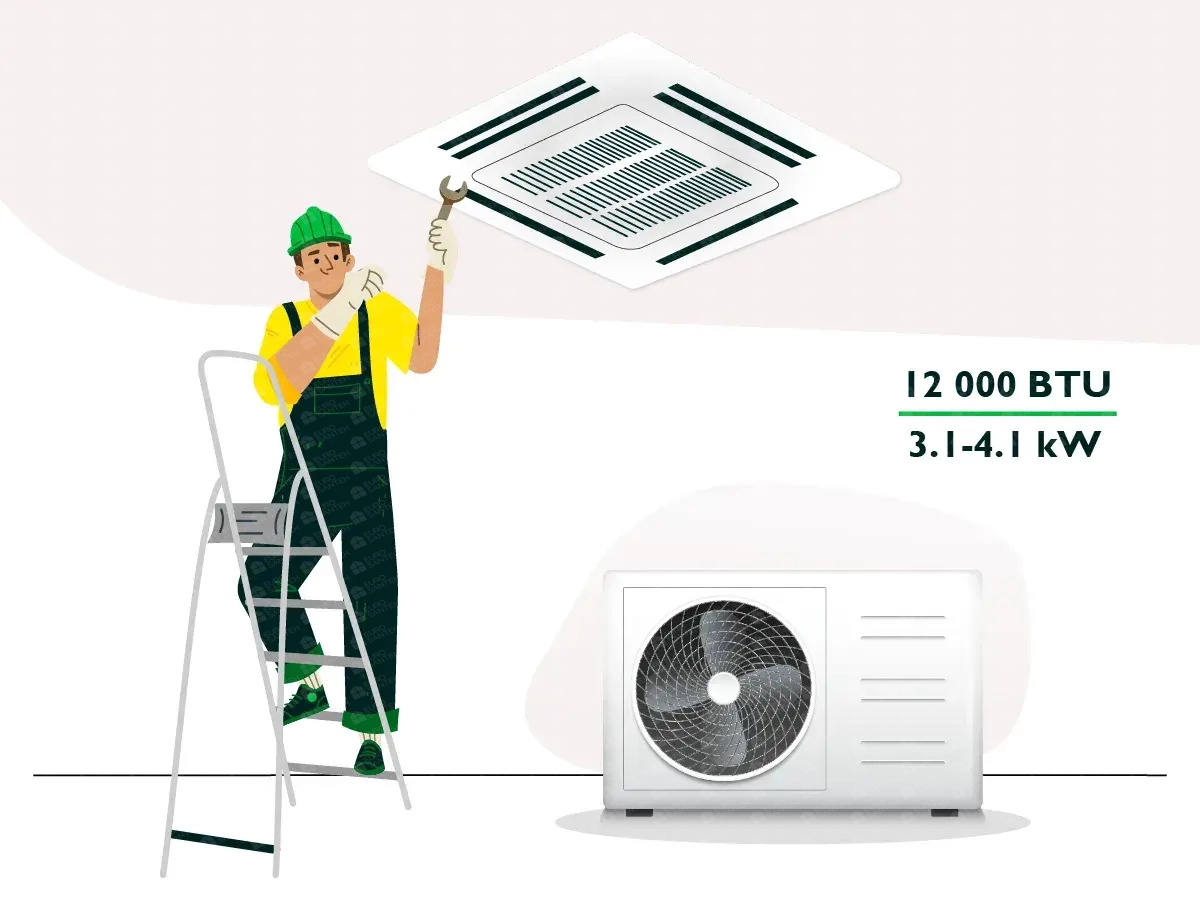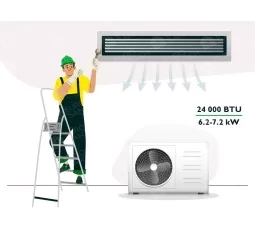Air conditioner installation in a private house in Chisinau, Moldova
Air conditioner installation in a private house is a significant decision that impacts both comfort and energy efficiency. Properly planning and executing the installation process ensures optimal performance of the HVAC system, providing a cool and comfortable indoor environment during hot summer months. Here’s a comprehensive guide on how to approach the installation of an air conditioner in a private house:
1. Initial Assessment and Planning
Before starting the installation, a thorough assessment of the house layout is necessary. This includes evaluating the size and layout of each room where air conditioning will be installed. Factors such as ceiling height, number and size of windows, insulation levels, and existing ductwork (if applicable) all play a crucial role in determining the type and capacity of the air conditioner needed.
2. Choosing the Right Type and Capacity
There are several types of air conditioning systems available for private houses, including split systems, ducted systems, and portable units. The choice depends on factors such as the size of the house, the number of rooms to be cooled, and the homeowner's preferences for energy efficiency and noise levels.
Split Systems: These are the most common choice for private houses. They consist of an indoor unit that is mounted on a wall or ceiling inside the house, and an outdoor unit placed outside. Split systems are known for their efficiency and ability to provide targeted cooling to specific areas of the house.
Ducted Systems: Suitable for larger homes, ducted systems distribute cooled air through a network of ducts hidden in the ceiling or walls. They offer a centralized cooling solution with adjustable vents in each room, providing uniform temperature control throughout the house.
Portable Units: These are versatile and easy to install, requiring minimal setup. Portable air conditioners can be moved from room to room as needed, but they are typically less powerful and may not be suitable for cooling large areas or multiple rooms simultaneously.
3. Installation Process
Once the type and capacity of the air conditioner are determined, the installation process can begin. Here’s a breakdown of the key steps involved:
Indoor Unit Installation: The indoor unit of a split system air conditioner is mounted on a wall or ceiling using brackets. Careful consideration is given to its placement to ensure optimal airflow and minimal obstruction. It's important to avoid placing the unit near heat sources or in direct sunlight, as this can affect its efficiency.
Outdoor Unit Placement: The outdoor unit is typically installed on a stable surface outside the house, such as a concrete pad or metal brackets attached to the wall. It should be positioned in a location that allows for unrestricted airflow and is away from obstructions like plants or debris that could block the unit's vents.
Connecting Refrigerant Lines and Electrical Wiring: Refrigerant lines and electrical cables are carefully connected between the indoor and outdoor units. Proper insulation and sealing of these connections are essential to prevent refrigerant leaks and ensure efficient operation of the air conditioner.
Testing and Commissioning: After installation, HVAC technicians conduct thorough tests to ensure the system operates correctly. This includes checking refrigerant levels, verifying electrical connections, and testing the functionality of the thermostat and remote control (if applicable). Adjustments are made as needed to optimize performance and ensure consistent cooling throughout the house.
4. Maintenance and Regular Servicing
To maintain the efficiency and longevity of the air conditioning system, regular maintenance is essential. Homeowners should schedule annual inspections with qualified HVAC professionals to clean or replace filters, check for refrigerant leaks, and inspect ductwork for any signs of damage or obstruction. Proper maintenance helps prevent breakdowns and ensures the system operates at peak efficiency.
5. Compliance with Regulations and Safety Standards
During installation, it’s important to adhere to local building codes, regulations, and safety standards. This includes obtaining necessary permits for the installation of the air conditioner and ensuring all work is carried out by licensed professionals who are knowledgeable about current industry practices.
6. Benefits of Professional Installation
Choosing professional installation for an air conditioner in a private house offers numerous benefits. Experienced technicians have the expertise to recommend the most suitable system based on the house’s layout and cooling requirements. They also ensure proper installation, which reduces the risk of issues such as leaks, inadequate cooling, or inefficient operation.
7. Energy Efficiency Considerations
Installing an energy-efficient air conditioner not only reduces utility bills but also minimizes the environmental impact. Look for units with high Energy Star ratings and features like programmable thermostats or variable-speed compressors, which optimize energy usage based on cooling demands.
In conclusion, installing an air conditioner in a private house requires careful planning, proper selection of equipment, and professional installation to achieve optimal performance and comfort. By following these guidelines and working with qualified HVAC professionals, homeowners can enjoy efficient cooling and enhanced indoor comfort throughout the year.
